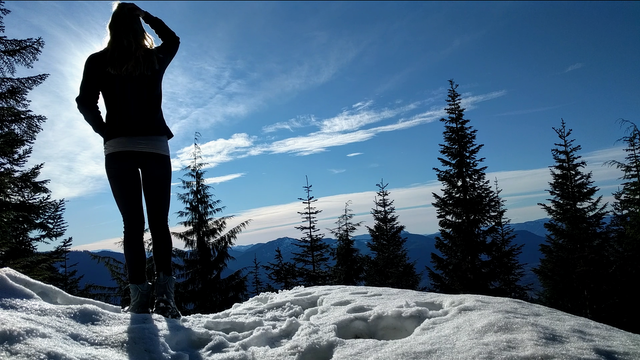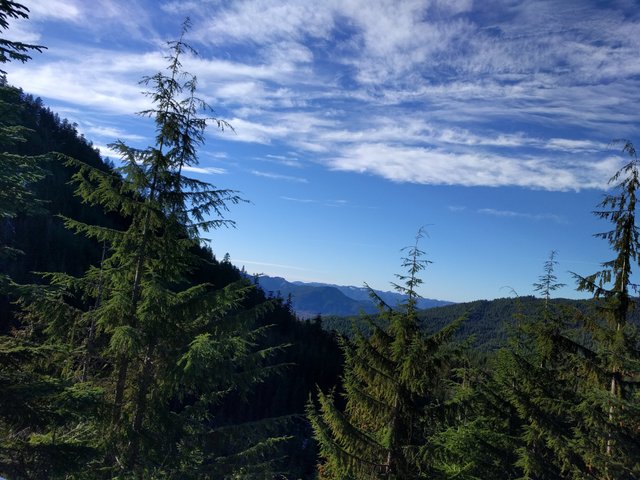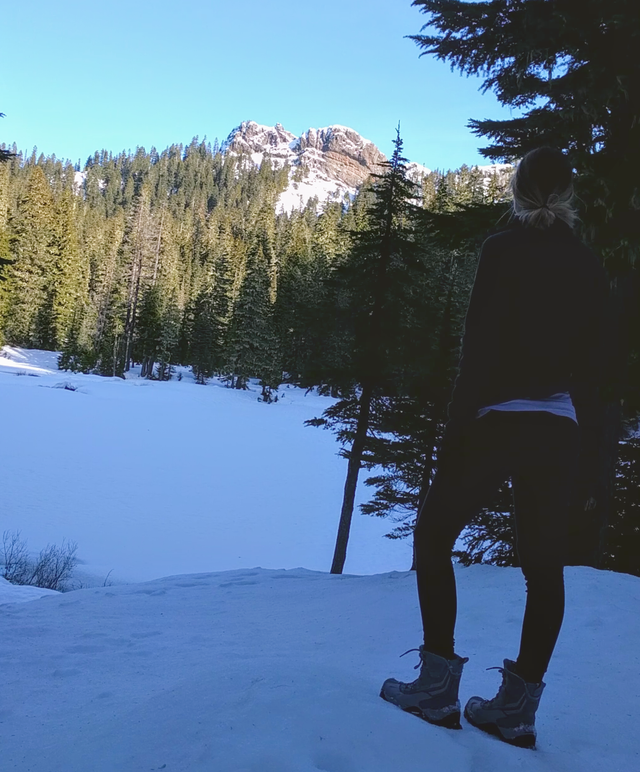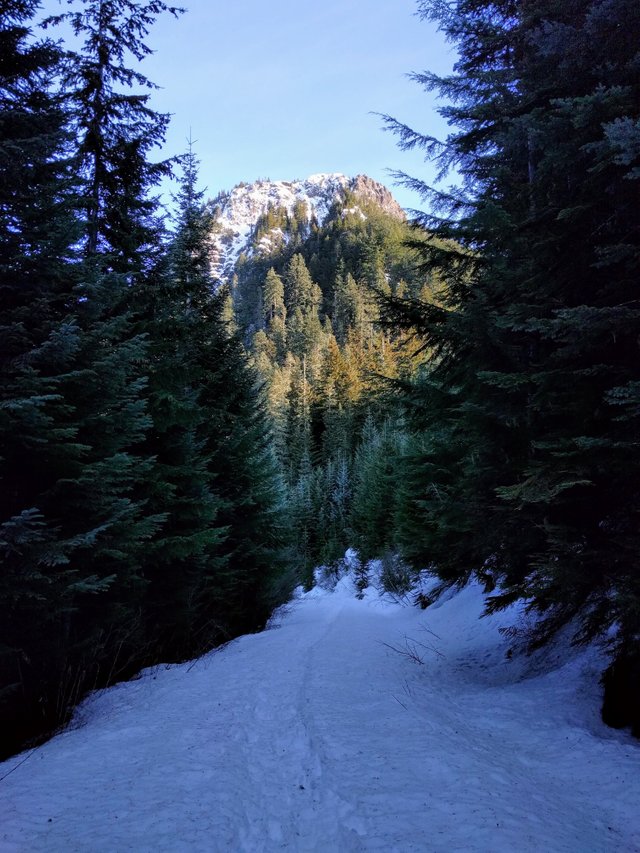Lessons from a winter, solo hike.
I drove up the winding road, higher and higher along the side of the hill. The Forest Service Road was littered with big rocks, washed out crevices and limbs from the old growth trees above head. I learned how to drive these kinds of roads from my time in Montana. You straddle the big ruts with the wheels of the car. You watch carefully for rocks, dirt or snow that might make you high center. It's a game, in a way. One that is more fun when you are not in a two-wheel drive hatchback. At three miles in, I reached the elevation where snow had still survived the mild January weather, meaning game over for my little Ford Focus. I make it a point to not be the person who gets stuck in the middle the road in an attempt to shave off a mile of walking. I pulled off to the side, practically on the edge of the hill itself, and parked.

Hiking near Ashford, WA, 1.12.19
This is a hidden challenge with winter hiking. You might have a hike planned that All Trails says is 4 miles, but getting to that trailhead in winter will likely mean extra distance and elevation. I pulled up my map and assessed. An extra 3 miles and 900 ft of elevation lay between me and the trailhead. With bright blue skies above head, I pulled on my boots, strapped snowshoes to my pack and set out on the path of crisp white snow. A single set of footprints marked the snow along the trail, and I followed them.

View of Gifford Pinchot National Forest, 1.12.19
Years of hiking solo have taught me that I'm not a trail blazer. I don't need or really want to be the first person to hike in an area in months. I find comfort in knowing that another living human has recently been on a trail, walked the same path, and maybe scared away a bear or two. It takes some of the wild out of the wild, and frankly, that is fine with me. I prefer to be on the conservative side brave, because there is a fine line between bravery and recklessness.
An hour passed and I finally reached the trailhead. Immediately the elevation shifted to a dramatic incline. The forest thinned out, and suddenly the trail became a tiny, snow-covered shelf on the face of a sharp cliff. I removed my snowshoes and carefully traced the footprints of the hiker before me. A single misstep or unbalanced sway could send me tumbling downhill. I kept my weight shifted into the hillside, digging my poles into the snow with each step. Huge boulders jutted from the side of the landscape above head. Snow and pine needles rolled off them and down the hill's face in a steady stream, like tiny avalanches.
With a final uphill pitch, a turn in the trail took me away from the cliff face and safely to level forest. The trees faded away, opening to a white field of a snow-covered lake, undisturbed except for melted pools of water, signifying the boundary between lake and land. The peak of a mountain lay directly on the other side. The footprints of the former hiker stopped here, leaving the trail to the peak itself hiding and indiscernible under a 4-foot deep, clean blanket of snow. I was emboldened by my progress. I pushed on, not ready to give up my dream of spending the night camping on the top of that beautiful peak. I knew that just past the lake was the true reward of this hike. Views of Mt. Rainier, Mt. St. Helens, Mt. Adams and the Olympics were hiding just beyond. The weather was ideal. If I could just find the trail leading to the peak and set up camp, I would have a front row seat to the sunset and sunrise of a lifetime.

Lake Christine, Ashford, WA, 1.12.19
I followed the pools of melted lake until it became a twisting creek, hidden beneath the snow. Not eager to risk falling in, I headed right, toward the forest. Trees dotted the landscape in every direction, just far enough apart that it was impossible to tell where a trail lay between them. From what I had read online, that forest would eventually lead to another cliff. After an hour of hiking, retracing my steps back to the lake, and trying a new direction, I gave up. No sunrise is worth falling into an icy lake or falling off a cliff for.
I could have stayed, set up camp at the lake, and still had an amazing experience, but a major, self-made rule sent me heading back down: I hadn't actually seen a single other person. Maybe this is a dumb rule, but I can't seem to convince myself that being completely isolated, in the dark, with nothing but thin nylon tent between me and the wilderness, is a fun idea. Plus, I had more than enough time to make it back to the car before dark (another rule I make for myself), so staying seemed all the more ridiculous.
I headed back down, still happy that I had make it to the lake. I took my time as I descended, stopping to feel the sun on my face and take in the views of the valley below. In spring, I'll come back and find that trail. I'll wake up on the peak and watch the sun rise in a fiery red-orange explosion of color over the horizon and over the tops of those mountains. Someday. But tonight, I'll be sleeping in my own bed.
Are you a solo hiker?
Do you backcountry camp alone?
How do you balance bravery with safety?
Let me know in a comment below!

Hello @saysme! This is a friendly reminder that you have 3000 Partiko Points unclaimed in your Partiko account!
Partiko is a fast and beautiful mobile app for Steem, and it’s the most popular Steem mobile app out there! Download Partiko using the link below and login using SteemConnect to claim your 3000 Partiko points! You can easily convert them into Steem token!
https://partiko.app/referral/partiko
Congratulations @saysme! You received a personal award!
You can view your badges on your Steem Board and compare to others on the Steem Ranking
Vote for @Steemitboard as a witness to get one more award and increased upvotes!
hey... this picture totally makes me feel good... thanks a lot... what camera did you use?